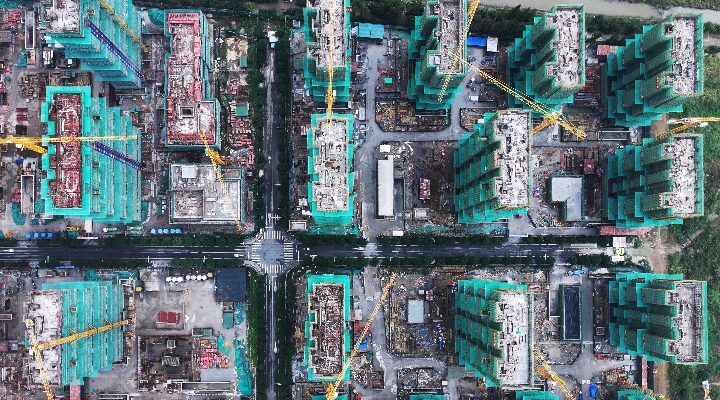
When people think of China’s cities, the mega-metropolises of Beijing and Shanghai come to mind. But small and medium sized Chinese cities are booming, largely due to central government policy and investments in infrastructure and transport.
The Chinese Government is actively trying to control the population of “megacities” with more than five million inhabitants and encourage rural workers to join the urban workforce. This trend in urbanisation has implications for how China’s economy grows and the investment case for the country in the coming years.
China's current urbanisation rate of 57% is still low relative to developed countries around the world, and Morningstar analysts expect this trend to continue. Yet China is already unique among both developed and developing countries because its population and economic activities are highly diffused across an ever-expanding set of cities, especially small and medium ones.
Based on 2018 data collected by the City Mayors Foundation, the aggregate population of Chinese cities, as measured by the top one, top three, and top 10 cities, accounted for 2%, 8%, and 12% of the total population, the lowest of all countries except India.
Among developed Northeast Asian countries, Tokyo and Seoul account for 30% and 50% of the population of their respective countries. The proportions for European capitals London, Madrid, and Paris are 21%, 13%, and 19%. Among developing countries, the proportions for Bangkok and Manila are 21% and 22%, respectively.
Current government policies mean the unique urbanisation trend of China is likely to continue on the same path, with the geographical diffusion not only persisting but expanding. Government policy favouring small and medium cities over large ones has irreversibly shaped the country's urban landscape.
How China’s Unique Urban Landscape Has Developed
- China has made extensive investments in high-speed rail, which facilitates intercity travel. This has given households the ability to migrate to nearby cities, away from traditional job centres in large cities. We believe most migrants would be attracted to cities that are located reasonably close to their former rural residences.
- Housing affordability varies greatly across cities. While it is headline grabbing to cite the high price/income ratios of the biggest Chinese cities, it is more meaningful to examine the affordability ratio of lower-tier cities, where property is more affordable.
- China’s cities are in different stages of economic development and are exposed to different sectors of the national economy.
- The disposable income growth rate for rural areas is actually rising faster than for urban areas, driven in part by government-directed redistributive policies and a shrinking labour pool leading to higher wages, especially for rural migrant workers.
Predictions for the Future
We expect stronger income growth in small and medium cities than in larger ones.In terms of homebuilding, we expect small and medium sized cities to see both price and volume growth supported by income growth, favourable demographics, and affordability.
With a higher degree of economic integration driven by policy and infrastructure, coupled with diminishing return on capital in larger cities, we expect certain sectors such as manufacturing and basic service industries, especially those with high labour content, to relocate to smaller cities. We expect wage levels to rise faster in these cities, resulting in faster income convergence with top-tier cities.
According to research from consultants McKinsey's, the geographic centre of China's middle-class growth is shifting from coastal China further west to its hinterland and we expect the high degree of market fragmentation will force the current crop of large developers to evolve into or be replaced by specialist firms. This process will be accelerated by the sheer scale of the Chinese population, such that even a cluster of small and medium cities should be of critical mass, capable of evolving into a market with distinct drivers and characteristics.




























